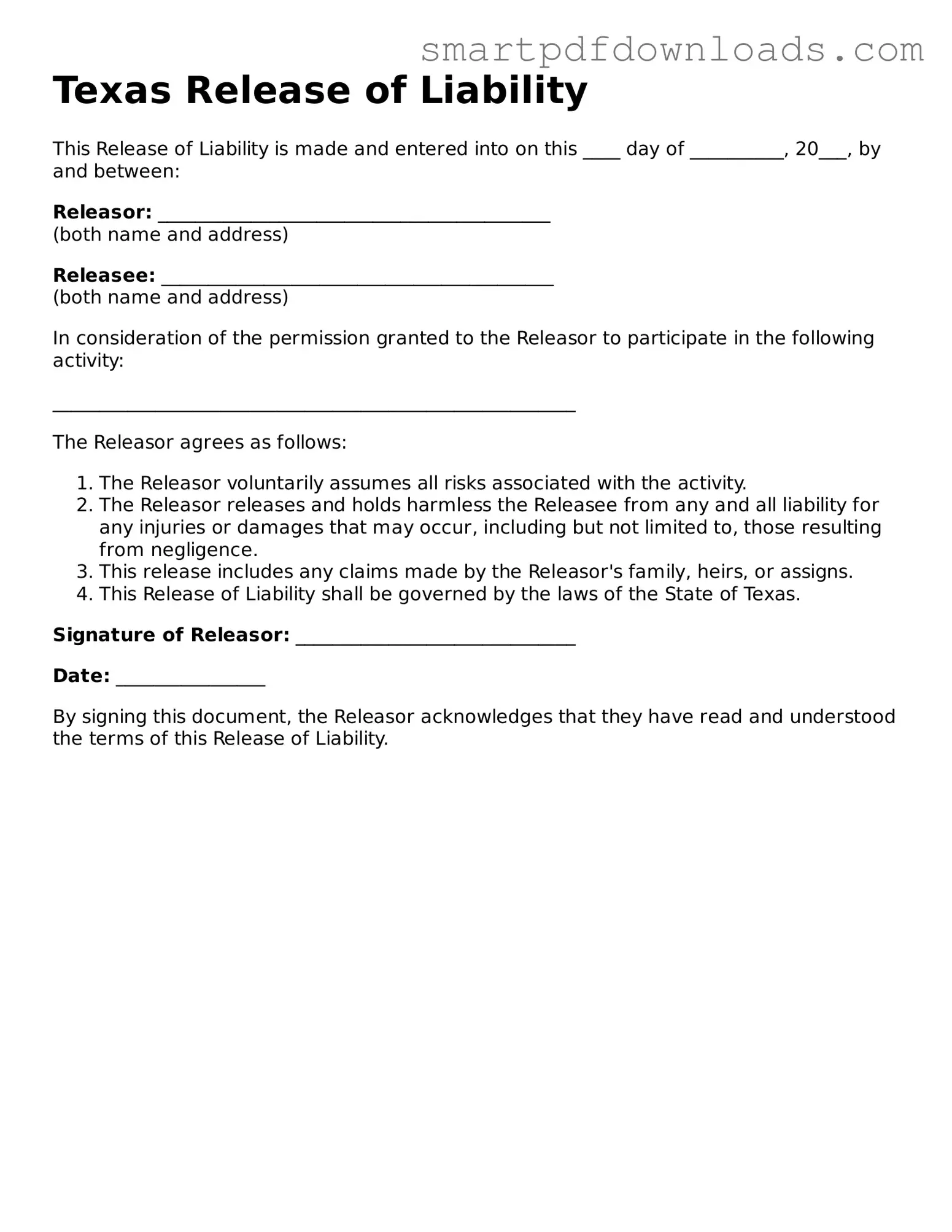Texas Release of Liability
This Release of Liability is made and entered into on this ____ day of __________, 20___, by and between:
Releasor: __________________________________________
(both name and address)
Releasee: __________________________________________
(both name and address)
In consideration of the permission granted to the Releasor to participate in the following activity:
________________________________________________________
The Releasor agrees as follows:
- The Releasor voluntarily assumes all risks associated with the activity.
- The Releasor releases and holds harmless the Releasee from any and all liability for any injuries or damages that may occur, including but not limited to, those resulting from negligence.
- This release includes any claims made by the Releasor's family, heirs, or assigns.
- This Release of Liability shall be governed by the laws of the State of Texas.
Signature of Releasor: ______________________________
Date: ________________
By signing this document, the Releasor acknowledges that they have read and understood the terms of this Release of Liability.
